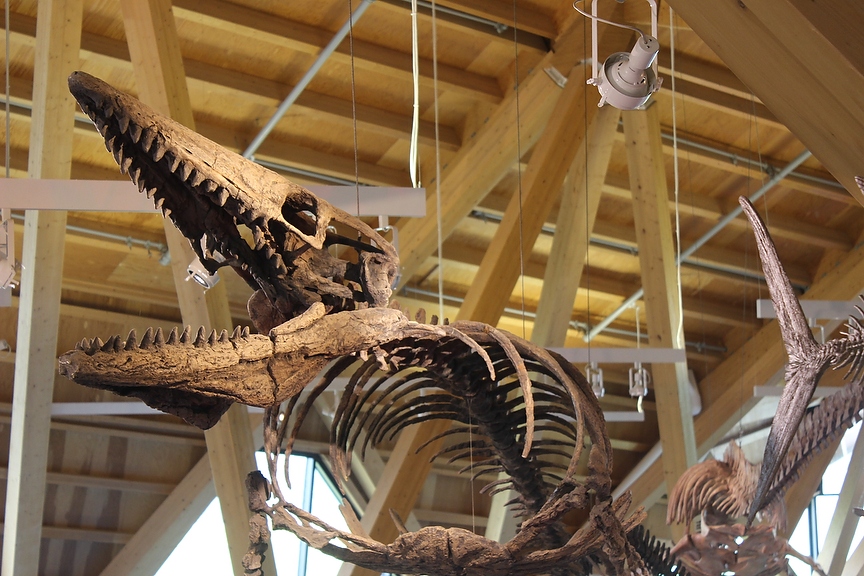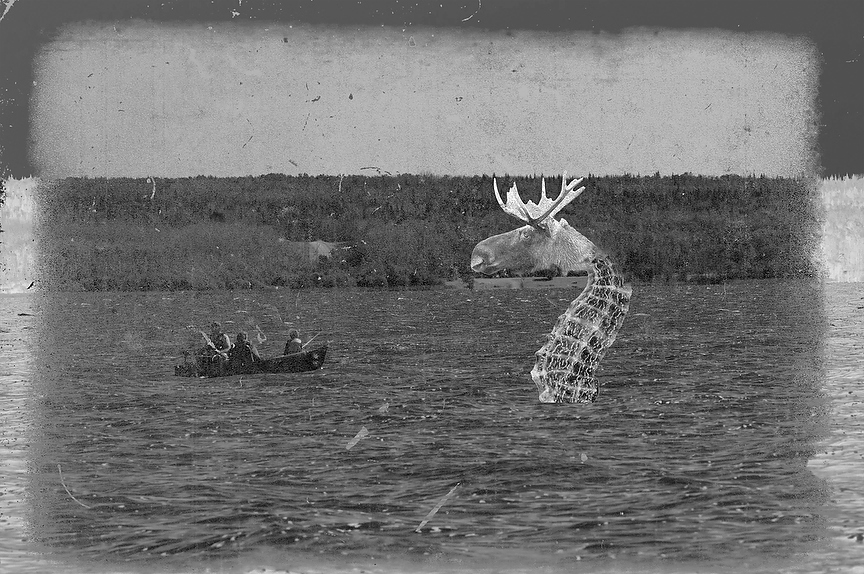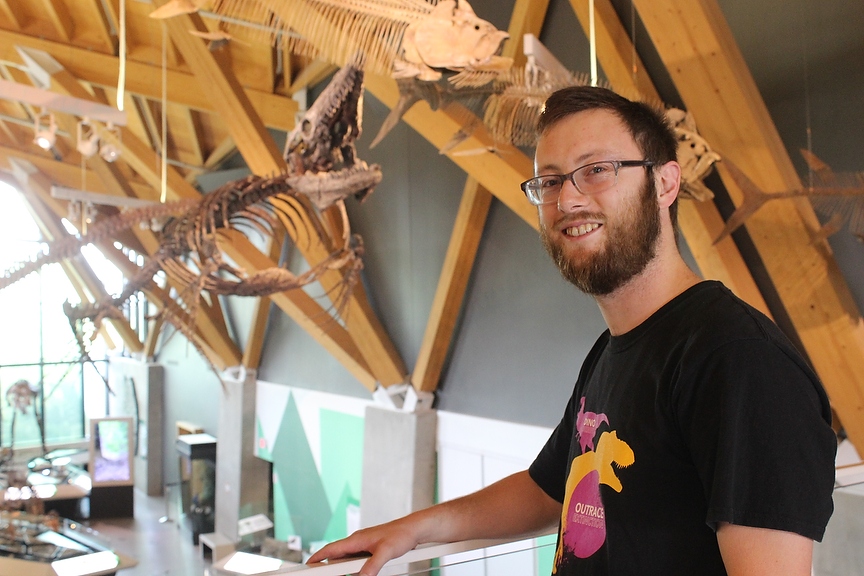
There must be something in the water…
Across the country and around every fishing hole, Canadians have told stories of monsters. To the west, visitors to Okanagan Lake have told tales of Ogopogo. To the east, Manipogo is said to haunt Lake Manitoba, while Cressie swims in the placid waters by Robert’s Arm in Newfoundland.
Our own province has no shortage of such legends.
The Edmonton Journal reported in 1984 that three scientists from the University of Alberta had visited Saddle Lake to investigate sightings of a “hairy, serpentine monster,” which local legend had attributed to the drowning of a young girl a century earlier. One expert on the expedition came to the conclusion that such sightings were “nothing more than animals such as moose and beavers.”
Only superstition. A simple misidentification.
But those who were there – and those who saw it – may think differently.
Such may have been the case almost a century ago, when in our own backyard a monster sighting grabbed the attention of the Northern Tribune.

Big, bad animal
“Huge Monster Recently Seen At Sturgeon Lake by Indian Causes Much Consternation.”
The words ran in bold, serif letters across the front page of the May 17, 1934 Tribune.
The newspaper reported store owner R. Clough was working when local Charles Badger entered in a “state of great excitement.”
“Some big, bad animal in the lake!” Badger said. “I see him! I see him!”
Badger told Clough he had been fishing when “the beast” rose from the lake. Badger described the beast as having the head of a horse, with a long, “greyish” body, covered in a slimy substance.
Badger reportedly went home to speak with his father after the sighting, who told him that he had seen the very same beast 30 years prior while he was setting his nets.
“The father then explained how he had taken a shot at the animal or whatever it was,” the Tribune reported, “but though he had lived by the lake all these years and had done much fishing, he never again saw it.”
The beast was anticipated to appear twice more that summer; after that, it was expected to settle in its underwater cavern again and disappear for years.
The Tribune reported the sighting had brought consternation to the indigenous community, and that “even the whites living at the lake feel none too easy about it.”
Located west of Valleyview, Sturgeon Lake averages approximately 5 metres deep, or 9.5 at its deepest point, although the Tribune alleged there to be a subterranean cavern in the lake said to be 16 fathoms (almost 30 metres) deep.
It was near this reported cavern that the monster was said to appear, and where it would rest after it made its appearances that summer.
The Tribune noted the sighting was reported a mere year after the world became aware of the Loch Ness Monster in 1933.
Dino lab weighs in
Such sightings bring to mind Alberta’s prehistoric past, when much of central Canada was covered in the Western Interior Seaway.
Philip J. Currie Dinosaur Museum lab and collections technician Jackson Sweder said through the Cretaceous Period, while dinosaurs stalked the land, prehistoric reptiles swam through the waters which flowed through North America from the Arctic Ocean to the Gulf of Mexico.
“Across central to eastern Alberta, you find lots of marine reptiles like plesiosaurs, mosasaurs and then various fish fossils, shark fossils, and ammonites, which are relatives of squids and octopuses,” Sweder said.
“A mosasaur is a relative of modern snakes and monitor lizards; if you imagine a Komodo dragon or a Nile monitor, but its legs have flippers and then a more fluke-like tail, like a shark tail, you wouldn’t be far off.
“Plesiosaurus had a short body, short tail, four giant flippers off the body and then a long neck off the front.”
Such ancient reptiles could range from approximately two to 18 metres long, Sweder said.

At the end of the Cretaceous Period, the seaway began to close, starting off in the north and working its way south as the Rocky Mountains started to form.
“The water started to drain away; that started in the later Cretaceous so 75 million years ago, 80 million years ago that range, and as the Cretaceous wore on to the end of the dinosaurs, it continued to shrink,” Sweder said.
“It still existed at the very end of the Cretaceous, 66 million years ago, but it was very shrunken, and more of a channel that ran up through Texas into parts of the United States.”
Could some of our monster sightings be such prehistoric reptiles trapped inland from the shrinking seaway?
Sweder doesn’t seem to think so – particularly not in the Grande Prairie region.
“Ancient reptiles, there’s a reason we call them ancient, because they are long extinct,” he said.
“Could some of them have survived past the meteor at the end of the Cretaceous? Maybe. But did they make it very far past that? No, they haven’t, because there's 66 million years and we’ve never found a mosasaur after the Cretaceous.”
The Grande Prairie region was also hardly the first place you’d find marine reptiles at the time, as much of the land was coastal plain.
“There are a few places where we find bivalves, which are the broader group related to clams,” Sweder said.
“Kleskun Hills Provincial Park is one place that we find bivalves quite commonly; those probably are freshwater species, but we do find them quite often.”
Instead, what palaeontologists mostly find in the region, particularly at the Pipestone Creek bonebed, are land dinosaurs, particularly Pachyrhinosaurus lakustai and hadrosaurs, or “duck-billed” dinosaurs.

As for monster sightings, Sweder is a bit more reserved in his assumptions.
“The most conclusive thing I've ever seen is that it’s a really large surgeon or something like that,” he said.
“From someone who’s never been to Scotland, I’ve only ever seen shows and programs about it. Nothing’s ever shown that it’s a plesiosaur; the best guess is it’s probably some sort of weird fish behaviour.”
Fish stories
Town & Country News recently put out a line to reel in some monster sightings from locals.
Sturgeon Lake local Janice Sunshine said she had heard of a beast at the lake.
“I heard something like a snake with real shiny skin,” Sunshine said.
“A really big snake.”
Diane Arsenault sat down with the News to tell her tale of a monster sighting at Sturgeon Lake when she was a child.
“I haven’t seen it since I was a kid,” Arsenault said.
“The time I saw it, I didn’t get a really good look. We were having a picnic with my family, and my uncle was standing there and all of a sudden, the ground basically shot out from underneath him and he did a triple somersault and this thing rushed off into the lake.”
Arsenault described the creature as the colour of mud, with a wide flat body and long tail, somewhat similar to a crocodile, with a mouth like a jackfish with dozens of rows of teeth.
She said the “Beast of Sturgeon” also has 12 eyes around the rim of its head, and while it can reach speeds on land of up to 60 miles per hour, it prefers to burrow down in the muddy shorelines of lakes or rivers, or beneath the leaves in the forest.
There’s only one issue with Arsenault’s story.
“I’m kind of a bullshitter,” she said.
Besides that, the biggest monster to come out of the Peace Region comes to the News from Katlin Rude, who said her son Finn was fishing and reeled in a monster of a fish at Swan Lake.
“We still have its head in the freezer,” Rude said.
“My son refuses to get rid of it! My husband had to break it to my son that catch only happens once in a lifetime for many!”